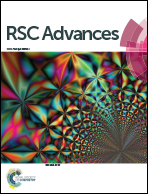Reducing odor emissions from feces aerobic composting: additives
Abstract
Aerobic composting is a reliable technology for treating human and animal feces, and converting them into resources. Odor emissions in compost (mainly NH3 and VSCs) not only cause serious environmental problems, but also cause element loss and reduce compost quality. This review introduces recent progresses on odor mitigation in feces composting. The mechanism of odor generation, and the path of element transfer and transformation are clarified. Several strategies, mainly additives for reducing odors proven effective in the literature are proposed. The characteristics of these methods are compared, and their respective limitations are analyzed. The mechanism and characteristics of different additives are different, and the composting plant needs to be chosen according to the actual situation. The application of adsorbent and biological additives has a broad prospect in feces composting, but the existing research is not enough. In the end, some future research topics are highlighted, and further research is needed to improve odor mitigation and element retention in feces compost.

- This article is part of the themed collection: 2021 Reviews in RSC Advances


 Please wait while we load your content...
Please wait while we load your content...